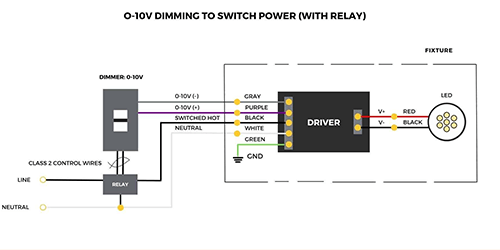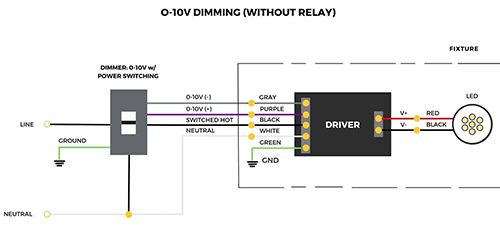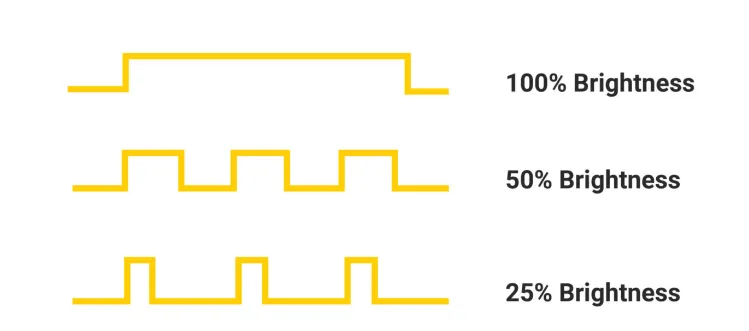Analogue control
0-10 V
0-10 V dimming controls the lighting intensity by adjusting DC voltage that provided for lighting fixtures ranging from 0 V to 10 V.
Advantages
.The simplicity of the lighting system is easy to understand.
.Suitable to control LED.

Note:
.The control signal is a DC voltage that varies between 0 and 10 volts.
.Light output 100% at 10 V and 0% at 0 V.

1-10 V
1-10 V dimming controls the lighting intensity by adjusting DC voltage that provided for lighting fixtures ranging from 1 V to 10 V.
Advantages
.The simplicity of the lighting system is easy to understand.
.Suitable to control LED.
Note:
.The control signal is a DC voltage that varies between 0 and 10 volts.
.Light output 100% at 10 V and 0% at 0 V.
PWM (Pulse Width Modulation)
PWM is used to control the output voltage of the converter by modulating the width of the pulse of the output waveform.
Advantages
.Low power consumption.
.Efficiency up to 90%.
.Easy to separate a signal.
.Little heat whilst working.
.Noise interference is less.
.High-power handling capacity.
.The requirement for a viable filter is less.
.Significant reduction in total harmonic distortion of load current.
.Amplitude and frequency can be controlled fairly independently.
.Synchronization between the transmitter and the receiver is not required.
Note:
.PWM speed is 50-90 Hz (50 f/s).
.You can see a flicker when recording video.

TRIAC (Triode AC Switch)
TRIAC is the most commonly used semiconductor device for switching and power control of AC systems as the Triac can be switched “ON” by either a positive or negative Gate pulse, regardless of the polarity of the AC supply at that time.
Advantages
.Ability to use with 230 V.
.Switching and power control of AC systems.
.It can be triggered with the positive or negative polarity of gate pulses.
.It requires only a single heat sink of a slightly larger size, whereas, for SCR (silicon controlled rectifier), two heat sinks should be required of a smaller size.
.It requires a single fuse for protection.
.A safe breakdown in either direction is possible but SCR (silicon controlled rectifier) protection should be given with a parallel diode.
Note:
.Low efficiency and may flicker if turned on together with other electronic devices.

Lighting
Control Methods
Contact Us
E-mail: sales@bitaso-lite.com
Tel.: +86 758 2801 266
Phone: +86 186 2047 1396
Add.: No.308, Lianhai Rd., Jianghai District, Jiangmen City, GD.P.R. China